It’s hard to explain why Wendy, the awkward, funny millennial created by artist Walter Scott not so long ago, continues to be so relatable. She has played a starring role in three books so far—Wendy, Wendy’s Revenge, and Wendy, Master of Art—and something about the way she stumbles through life could explain what makes her so engaging. After all, although her career as an aspiring artist may have little to do with many of our day jobs, that doesn’t stop her experiences from being painfully reflective of what so many of us grapple with: toxic relationships, inane distractions, or economic concerns constantly getting in the way of our desires.
Wendy and Wendy’s Revenge (originally published by Koyama Press) have been re-published by Drawn & Quarterly, allowing new readers to engage with her effortless charm and irreverent way of thinking. Scott uses his powerful female character to puncture holes in all kinds of sacred cows, raising questions about the absurdity of our modern lives, the shallowness of what society often tends to celebrate, and even the inadequacy of education when it comes to dealing with real-world anxieties. Taken together, these books give us valuable insights into what motivates and challenges a generation.
We had a few questions for Scott, about how he looks at himself and his famous creation, what he does when he isn’t cartooning, and how Wendy has evolved since those early days of being shared on Facebook. Here are his responses.
BROKEN FRONTIER: Wendy has been described as everything from a “post-college hipster” to a “messy yet lovable aspiring artist.” I was wondering how you describe her now, half a decade after she was created?
WALTER SCOTT: I would still consider her an artist, although at this point, she is beginning to realize that she is not so young anymore. Her ongoing misadventures and mistakes become less about the foibles of youth and more about the ongoing struggles of adulthood that, as it turns out, don’t really disappear.
BF: Is it safe to assume that secondary characters like Screamo, Jeff and Winona are placeholders for specific ideas or ideological positions you try to introduce into your work?
SCOTT: They live lives that are specifically affected by certain ideas around sexuality and cultural belonging, so, their stories are an opportunity to see how a life lived in and around these identities plays out in the art world, or sometimes, how it doesn’t. Their stories reflect things I have experienced personally, so, like Wendy, they are other outlets for my ongoing understanding of my own place in the world.
BF: You once described the genesis of Wendy as you drawing “the stupidest, funniest, dumbest thing possible.” It’s a lot smarter than that though, and so much of the humour is subtle. Does that original intention stay at the back of your mind when you begin a new Wendy story?
SCOTT: Although with every new book I try to cut a little closer to the bone of an experience, and create deeper and more emotionally resonant stories, it doesn’t work unless I’m laughing while I’m sketching the initial page artwork. The spirit of absurdity needs to remain in the project for it to work.
BF: Has your approach to formal education—such as an MFA program—changed since you first began focusing on the North American art scene?
SCOTT: I used my last book to explore my recent experience in the MFA program at the University of Guelph. That being said, I don’t consider the book to be about MFA programs per se, I instead think the book is more about personal relationships simply in front of a backdrop of this higher education — that somehow, an MFA is no more different than working in an office or anything other kind of community or institution. Regardless of where we make community, people always seem to find a way to fall into the same problems with each other. One benefit to the MFA as the book’s setting is that the artwork that the fictional characters create is an insight into who they are, it’s an insight into their obsessions and value systems, which helps the narrative.
BF: Your bio describes you as ‘an interdisciplinary artist working with writing, illustration, performance and sculpture’. Is this how you see yourself?
SCOTT: Yes, and most recently, I’d have to add video to that list. I have begun getting more into narrative, time-based artworks, because I realize my interest in animation has never actually left, and making works that are closer to my desires is a way to stay honest.
BF: Your installation, ‘Awl in the Heel of the Real‘, went on display in 2020 and ought to have been seen by a lot of people. Does it bother you that Wendy sometimes distracts a potential audience from much of your other work?
SCOTT: The show was in fact well attended because different art contexts simply have different audiences. One doesn’t take away from the other. For instance, the people who go to Wendy book launches are the people who go to book launches in general. A lot of people who engage with my sculptural work don’t read comics. But with a project like Wendy, it’s possible to have someone who is engaged and curious with my art practice as a whole to cross over and have a new understanding of different mediums. It depends on the viewer and their interest.
BF: Does Wendy grow up and become a responsible adult?
SCOTT: I’ll have to get back to you on that.
Buy the Wendy books online from Drawn & Quarterly here





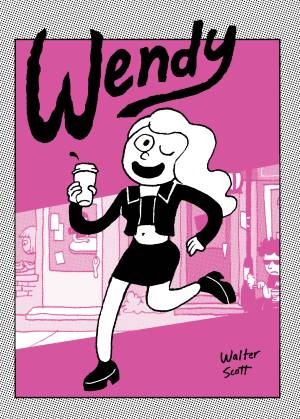
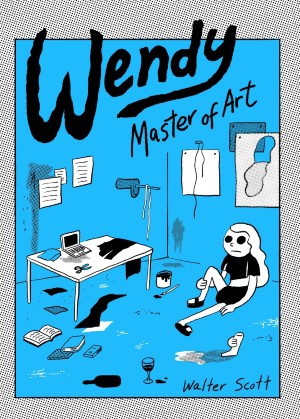
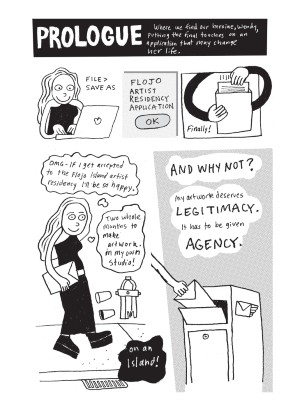
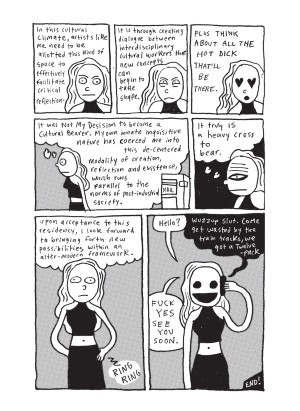
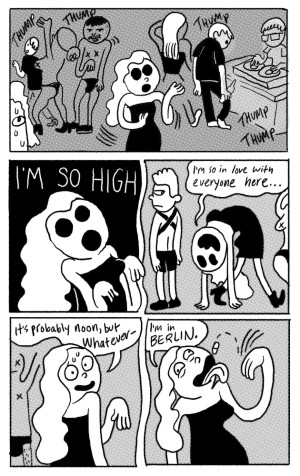
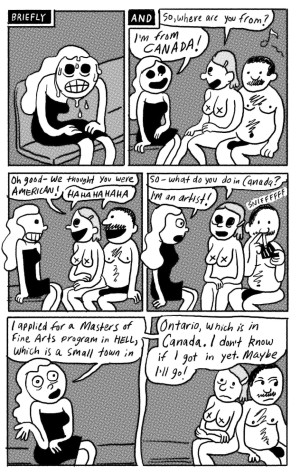
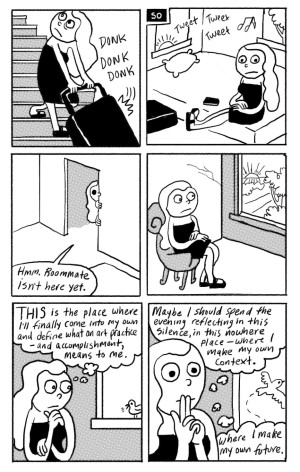
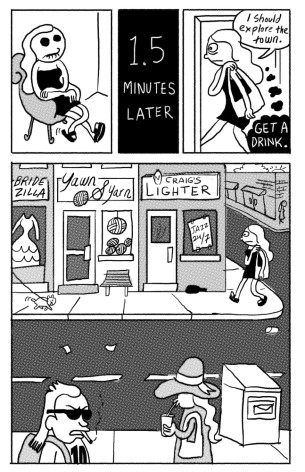
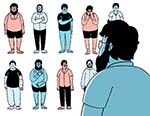

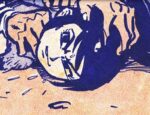
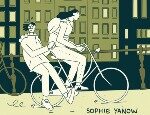


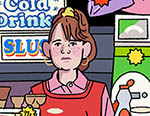
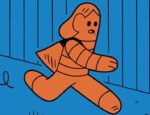
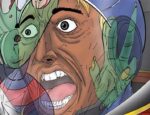
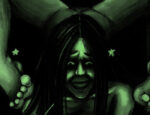
[…] Pereira interviews Walter Scott about Wendy, characters reflecting personal experiences, an enduring interest in animation, and […]